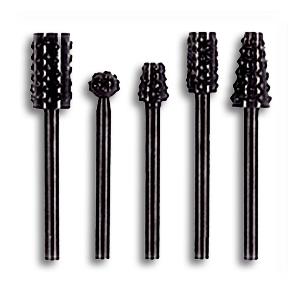Nowadays, high speed steel continues to be the leading material for the production of a variety of metalworking nozzles and cutting tools. Such alloys are often used in the manufacture of machine saws, drills and drill heads. Despite the wide variety of various carbide composite and ceramic materials that have now appeared, providing even greater machining productivity, high-speed tool steels hold their positions firmly.
The widespread use of such alloys for the production of complex-profile cutting tools is due to the combination of a high strength index (up to 68 HRC) and heat resistance (they do not lose their working properties even at 650 ° C) with a high viscosity value significantly exceeding that for carbide composite materials . In addition, high-speed steel has an extremely high processability, which implies good machinability by pressure and cutting.
What properties such an alloy will have depends on alloying additives. Typically, high speed steel is a multicomponent system containing chromium, molybdenum, tungsten, cobalt and vanadium. The presence of various components, as well as their content as a percentage, is indicated when marking. The letter P here means that the steel is high speed, the next figure indicates the percentage of tungsten. Further letters indicate the presence of other alloying elements, and the numbers following the letters indicate their percentage mass fraction in the alloy. So, the letter M means the presence in the system of molybdenum, F - vanadium, K - cobalt, A - nitrogen.

According to the content of alloying additives, high-speed steel can be classified into tungsten, molybdenum, tungsten-molybdenum. Metals doped with cobalt stand out in a special group. Such alloys, as a rule, are used in the manufacture of tools for processing hard-to-work parts from heat-resistant alloys. Vanadium alloyed high-speed steel is mainly intended for the production of tools of the so-called “fine” finish - broaches, reamers, and others.
The most common and perhaps the oldest brand of high-speed steel P18 is used for the manufacture of complex and shaped thread-cutting tools. Means of a standard form for high-quality metal processing are mainly made of alloy grade P9. Mills, cutters and the like are made from it.
According to the operating temperature regime, high-speed steels are divided into three categories: alloys with normal, high and high heat resistance. The first group includes tungsten (P18, P9) and tungsten-molybdenum (P6M5). Such grades are used in the processing of non-ferrous metals, structural steels and cast iron.
The materials of the second category are characterized by an extremely high content of cobalt, carbon and vanadium. The most popular brand in this group is R6M5F3. Vanadium steels are characterized by increased wear resistance. Their only serious drawback is poor sandability, since the hardness of vanadium carbides is not inferior to that of an electrocorundum grinding disk.
And finally, steels of the third category are characterized by a low percentage of carbon content, which makes them suitable for processing heat-resistant, stainless and titanium alloys. Another characteristic feature of them is the large number of alloying elements. This group includes such brands as 3V20K20H4F, V11M7K23, etc.